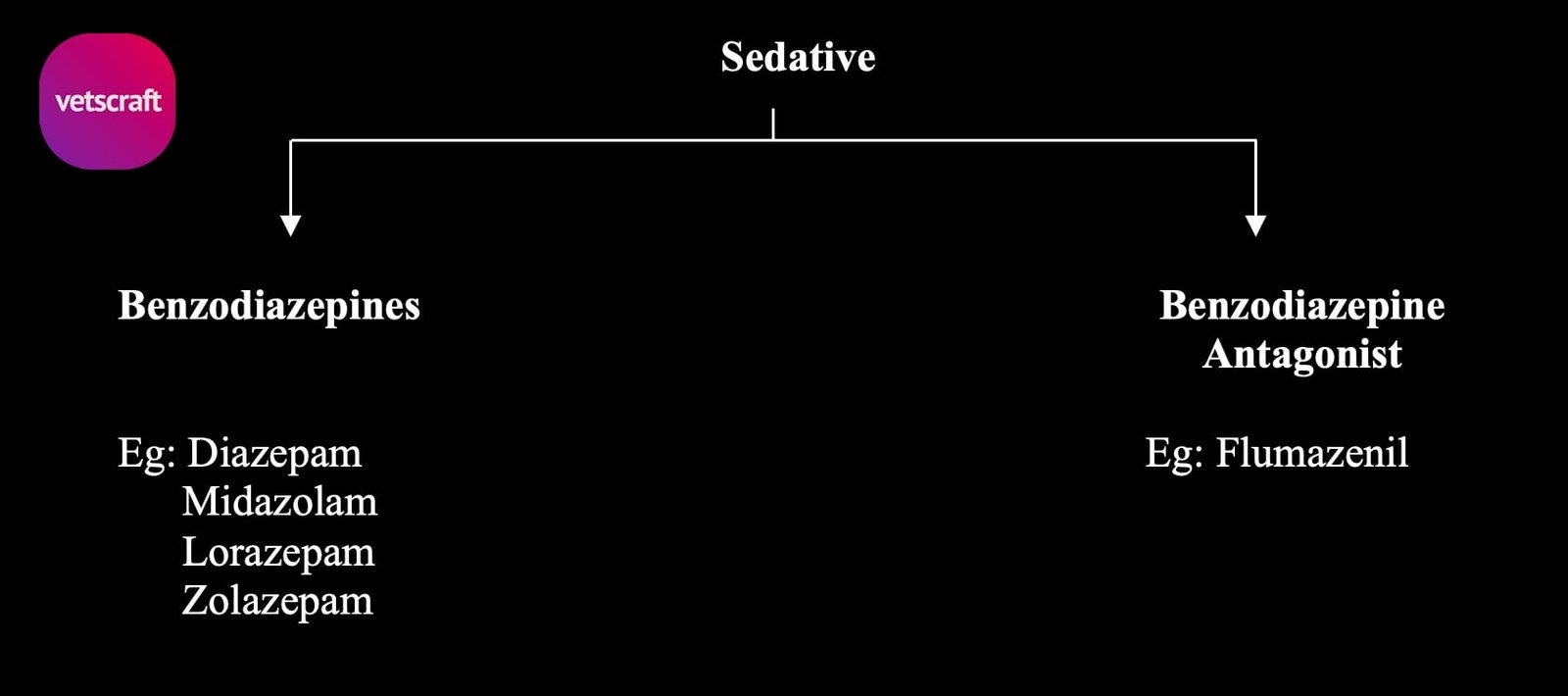TABLE OF CONTENTS
Sedatives
Sedatives used to induce sedation in animals. A mild degree of central depression in which the patient awake but calm. Sufficient stimulation will arouse the patient from sedation. Sedatives act by a dose dependent depression of the cerebral cortex. eg. Benzodiazepines.
Benzodiazepines such as Diazepam, Midozolam, Lorazepam, Zolazepam used as sedative in animals.

Benzodiazepines (Diazepam, Midozolam, Lorazepam, Zolazepam)
Unlike phenothiazines, Benzodiazepines do not sedate or tranquilize the animal. These cause no anaesthesia.
Benzodiazepines have minimal adverse effect on cardiovascular and respiratory system.
Used in high risk and geriatric patients.
Administered prior to Ketamine to prevent seizures and muscle hypertonus.
These injected slowly to prevent versus thrombosis.
Rapidly crosses blood brain barrier and placental barriers.
Synergistic with thiobarbiturates, opioids and possibly alpha 2 agonist.
Propylene glycol, the diluent used in diazepam on rapidly in i/v administration causes bradycardia hypotension and transient cardiac arrest.
Diazepam-physical imcompatibility with most drugs except Ketamine.
Midazolam is water soluble more potent than diazepam and has a shorter duration of action in some animals.
Diazepam gets absorbed to plastics and hence to be stored in glass vials or ampules or syringes.
Benzodiazepine antagonist (Flumezenil)
Flumezenil is a benzodiazepine antogonist used to reverse Midazolam and Diazepam.
Benzodiazepine antagonist dose as Sedative: 1 part flumazenil to 13 parts of diazepam, Midazolam.